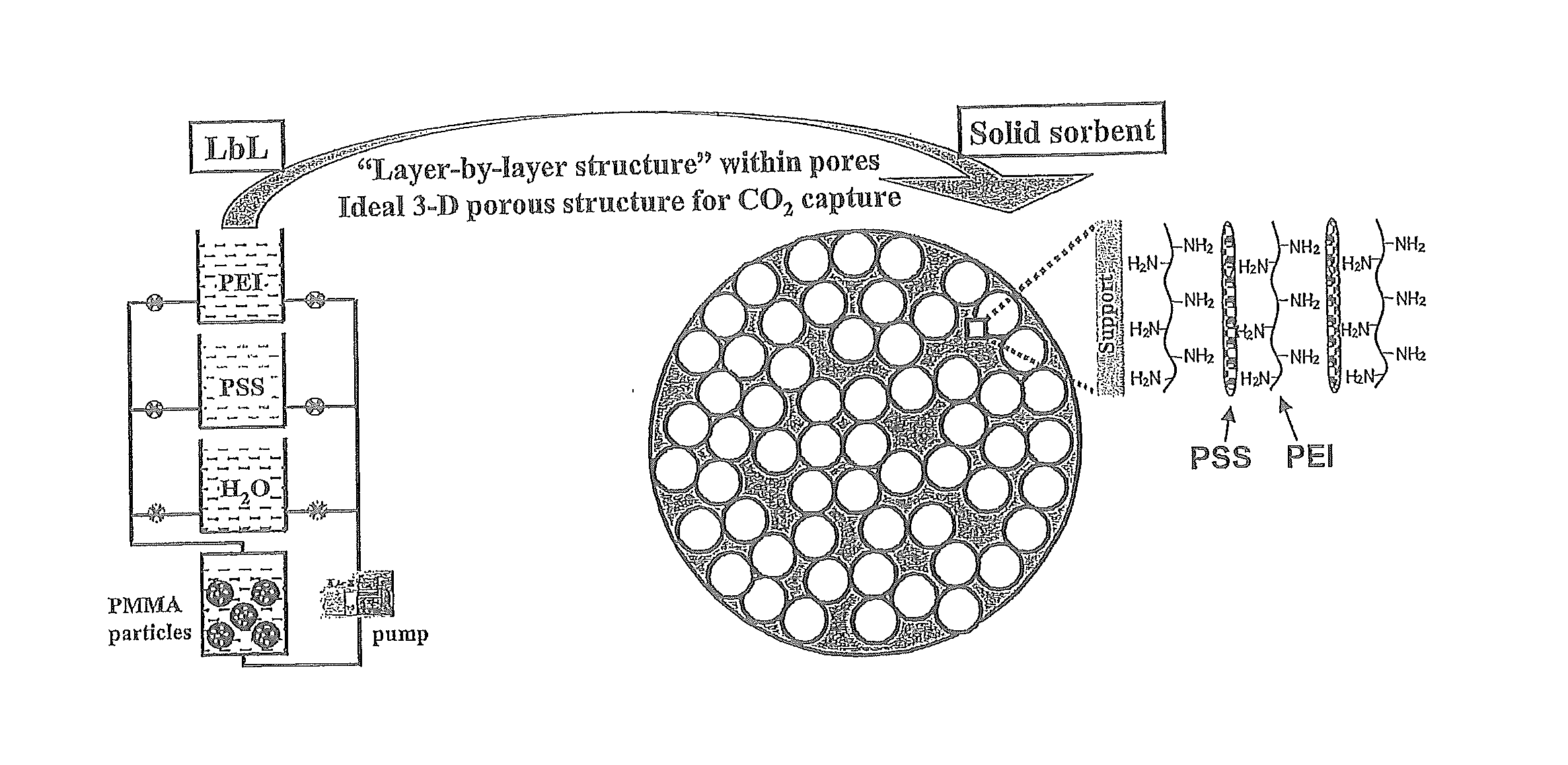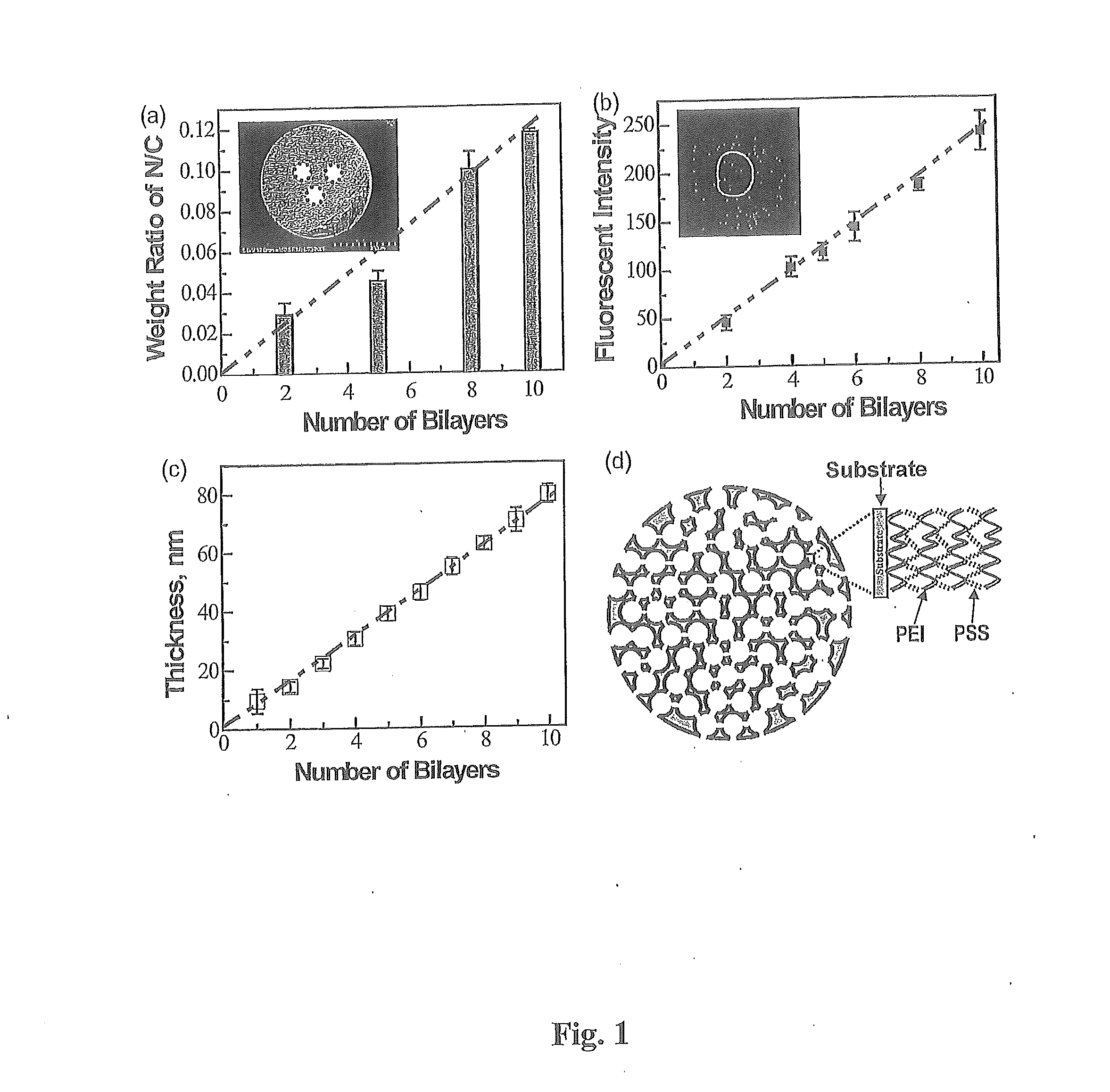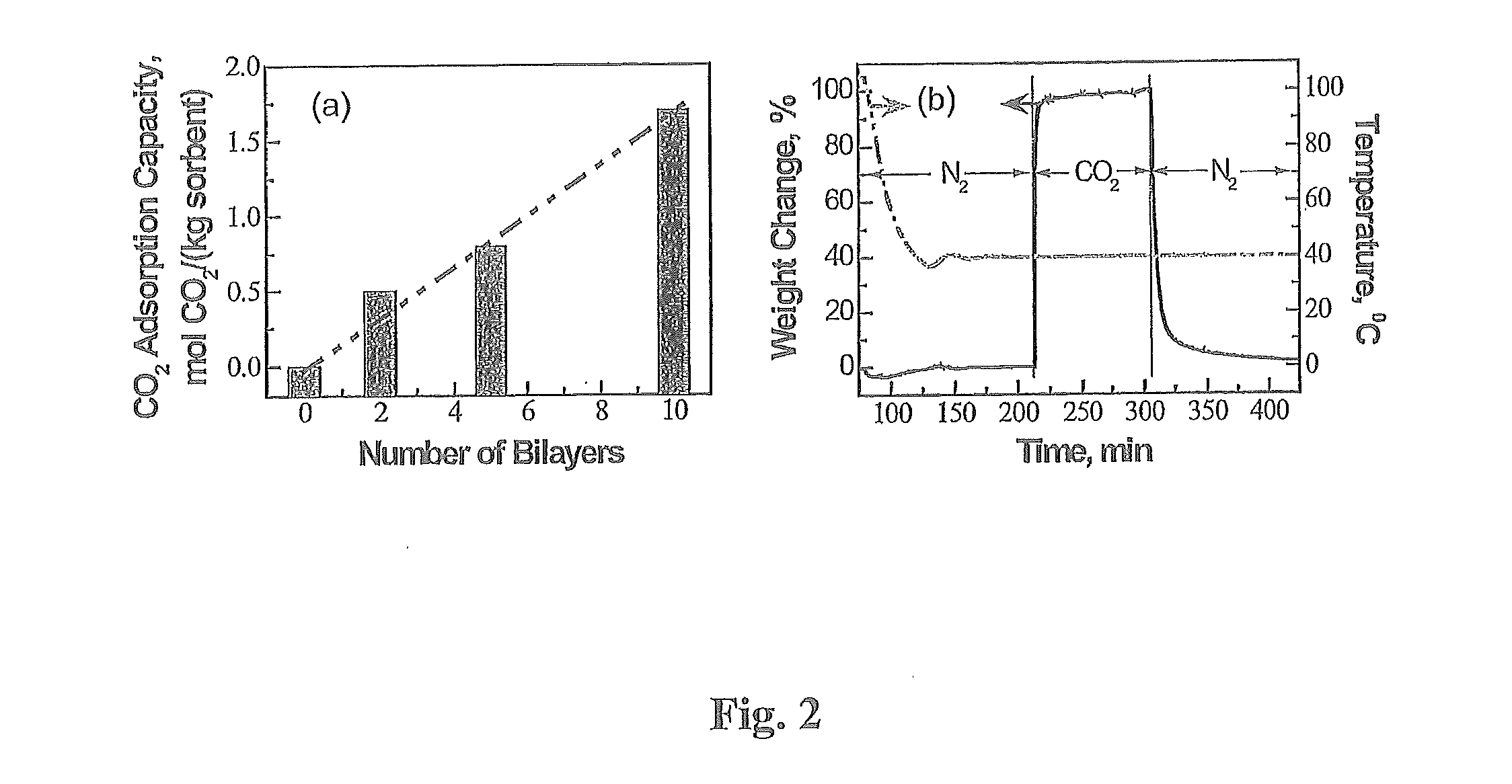Layered Solid Sorbents For Carbon Dioxide Capture
a carbon dioxide and solid sorbent technology, applied in the direction of hydrogen sulfide, separation process, other chemical processes, etc., can solve the problems of equipment corrosion, high operating cost, and unwanted foaming of sorbents, and achieve the effect of reducing the number of sorbents
- Summary
- Abstract
- Description
- Claims
- Application Information
AI Technical Summary
Benefits of technology
Problems solved by technology
Method used
Image
Examples
examples
[0082]The following examples of preferred embodiments of the present invention set forth the performance of amine-multilayered solid sorbents for CO2 removal and the effect of fabrication variables.
[0083]The emission of fossil fuel carbon dioxide (CO2) to the atmosphere is implicated as the predominant cause of global climate change; therefore, advanced CO2 capture technologies are of the utmost importance. In this study, innovative amine-multilayered sorbents were fabricated using layer-by-layer (LbL) nanoassembly technology via alternate deposition of a CO2-adsorbing amine polymer (e.g. polyethylenimine or PEI) and an oppositely-charged polymer (e.g. polystyrene sulfonate or PSS). We found that the developed sorbents could be used for CO2 capture and that LbL nanoassembly allows us to engineer their CO2 capture performance through the fabrication variables (e.g. deposition polymers, deposition media, and number of bilayers). PEI / PSS was found to be the best polymer combination for...
example no.1
Example No. 1
Preparation of PEI-Multilayered PMMA Sorbents of the Present Invention
[0086]LbL nanoassembly was used to prepare PEI-multilayered sorbents. In addition to employing the from the procedures in the LbL literature, the present invention further applied a vacuum pump to remove air and to run the solutions through the interior pores of sorbent supports (i.e. PMMA particles). Amine-multilayered sorbents were prepared at room temperature. PMMA microparticles were packed in a custom-made deposition chamber. Vacuum was applied first for 30 minutes (30 min) then the following procedures were carried out under 380 ton to prepare PEI-multilayered sorbents in aqueous media as further set forth in FIG. 5: (i) A positively-charged polymer (e.g. PEI or PAH) solution was run through PMMA microparticles for 15 min, then the microparticles were rinsed with deionized water twice for 15 min. (ii) A negatively-charged polymer (e.g. PSS or PAA) solution was run through the PMMA supports follo...
example no.2
Example No. 2
[0097]The chemical structures of PEI, polystyrene sulfonate (PSS), and polymethylmethacrylate (PMMA) are shown in FIG. 13. PEI (Mn=10,000) and PSS (Mn=70,000) were purchased from Sigma Aldrich Co. (St. Louis, Mo.) and individually dissolved in deionized water at a concentration of 10 mg / ml. Porous support, PMMA particles (HP-2MG), was obtained from Sigma Aldrich Co. with the following manufacturer specifications: effective particle size −0.5 mm, pore volume −1.2 ml / g, specific surface area −470 m2 / g, and density −0.29 g / ml. N2 and CO2 of high purity (>99%) were used. The PMMA sheet was purchased from United States Plastic Corp. (Lima, Ohio). Rhodamine B labeled PEI (RhoB-PEI) was synthesized by mixing the solutions in 50 mM phosphate buffer solution at a molar ratio of 1:100 of PEI to rhodamine B, stirring for 2 h at room temperature, and dialyzing in deionized water using a cellulose dialysis sack with a cutoff of 10 kDa for 2 days.
Preparation of PEI / PSS Nano-Layered S...
PUM
| Property | Measurement | Unit |
|---|---|---|
| Time | aaaaa | aaaaa |
| Thickness | aaaaa | aaaaa |
| Thickness | aaaaa | aaaaa |
Abstract
Description
Claims
Application Information
 Login to View More
Login to View More - R&D
- Intellectual Property
- Life Sciences
- Materials
- Tech Scout
- Unparalleled Data Quality
- Higher Quality Content
- 60% Fewer Hallucinations
Browse by: Latest US Patents, China's latest patents, Technical Efficacy Thesaurus, Application Domain, Technology Topic, Popular Technical Reports.
© 2025 PatSnap. All rights reserved.Legal|Privacy policy|Modern Slavery Act Transparency Statement|Sitemap|About US| Contact US: help@patsnap.com



